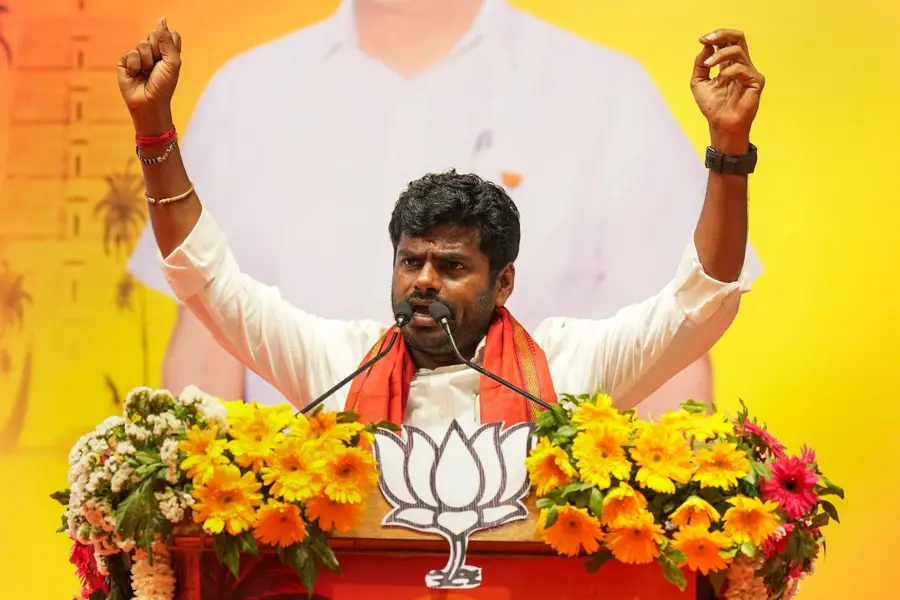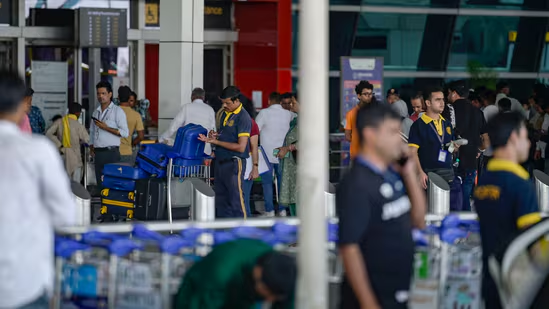
Punchline: As the BJP steps into the Ayyappa discourse, Annamalai’s presence at Pandalam signals a direct challenge to the Kerala government’s narrative on faith and politics.
On September 22, 2025, Kerala will host yet another significant Ayyappa meet, this time at Pandalam, with BJP veteran and former Tamil Nadu state president K. Annamalai as the keynote figure. Organized by the Sabarimala Karma Samithi, the event titled Sabarimala Protection Sangamam is being projected as a counterweight to the state government’s earlier Global Ayyappa Sangamam held in Pamba.
What Is the Event?
The Sabarimala Protection Sangamam is themed around “Faith with Development” and is expected to bring together around 1,000 delegates. Attendees will include sanyasis, Hindu organisations, temple authorities, devotees, and importantly, the Pandalam royal family, which has historically held ritual authority in Sabarimala traditions. The venue—Nanak Convention Centre in Pandalam—is symbolically powerful, as the town is closely linked to Lord Ayyappa’s story.
Annamalai’s presence underscores the BJP’s increasing attempt to root itself in Kerala’s religious and cultural discourse, especially around Sabarimala, which has long been a flashpoint in state politics. His reputation as a tough organiser and articulate speaker makes him a natural choice to rally devotees and politically challenge the ruling Left government.
Why It Matters Politically
The counter-meet is widely seen as a response to the Kerala government-backed Global Ayyappa Sangamam held at Pamba earlier this year, which attracted over 4,000 delegates including international participants. While the government highlighted pilgrim infrastructure, tourism development, and crowd management in its event, critics accused it of politicising faith and using the Sangamam to project a soft image before voters.
The BJP, through the Sabarimala Protection Sangamam, aims to reclaim the narrative. By involving the Pandalam royal family—whose absence from the government event drew attention—the party signals that it stands closer to devotees and traditional custodians of the shrine. This move could politically corner the ruling Left Democratic Front (LDF), which faces criticism for being distant from grassroots religious sentiments. For the BJP, which has struggled to win substantial seats in Kerala, such events provide an entry point to expand its influence.
Key Themes at the Meet
- Faith and Authenticity: By highlighting traditional custodians and rituals, the meet positions itself as more authentic compared to the government’s larger, globalised approach.
- Development Promises: Using the theme “Faith with Development,” the event will likely focus on improving pilgrim facilities while keeping cultural values intact.
- Political Messaging: With Annamalai at the forefront, the BJP signals its intention to directly challenge the state government on issues of faith, governance, and cultural representation.
- Grassroots Mobilisation: Beyond symbolism, the Sangamam is also a platform to build networks among Hindu organisations, temple activists, and devotees—networks that may be mobilised during elections.
Larger Implications
- Electoral Strategy: With Kerala’s assembly elections approaching, the BJP is keen to broaden its base. Religious mobilisation around Sabarimala offers an emotional and cultural plank to challenge the LDF and Congress-led UDF.
- Faith vs Governance Debate: The dueling Ayyappa meets—government-backed vs. opposition-led—reflect a broader clash over who has the right to represent and protect faith, and whether faith can be separated from politics at all.
- Public Perception: Devotees will ultimately decide whether they view these gatherings as genuine acts of preservation or as political theatre. The crowd turnout and media response will shape this perception.
- Kerala’s Political Climate: With the BJP positioning itself as the “protector of tradition” and the government promoting itself as the “moderniser of pilgrim facilities,” Kerala could see a sharper polarisation in campaign narratives.
What to Watch
Conclusion
- The level of participation and media visibility the Sangamam with Annamalai receives compared to the government’s event.
- Whether the Pandalam royal family’s participation influences wider devotee sentiment.
- How the Kerala government responds—by downplaying the event, countering its messaging, or showcasing developmental outcomes at Sabarimala.
- The role of Annamalai beyond this meet—whether he becomes a recurring figure in Kerala’s political-religious landscape or this remains a one-time intervention.
In Kerala’s charged political climate, faith has often become a battlefield for influence. By stepping into the Ayyappa discourse with Annamalai as its face, the BJP is signaling that it intends to challenge the ruling government on both cultural and electoral grounds. If the meet succeeds in mobilising devotees and drawing attention, it could serve as a political checkmate. However, if dismissed as political drama, it may remain symbolic. Either way, this event demonstrates how closely faith and politics are intertwined in Kerala’s present and future.
FOR MORE BLOGS – beyondthepunchlines.com

 Add to favorites
Add to favorites







